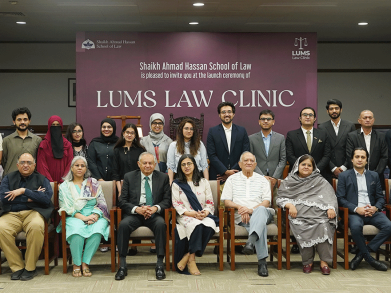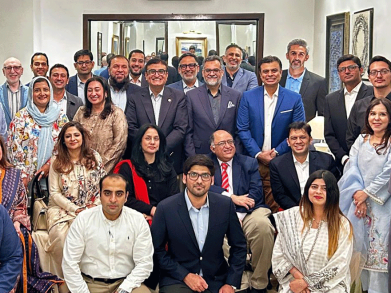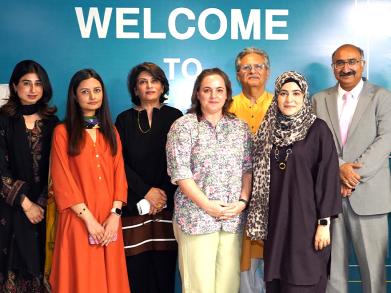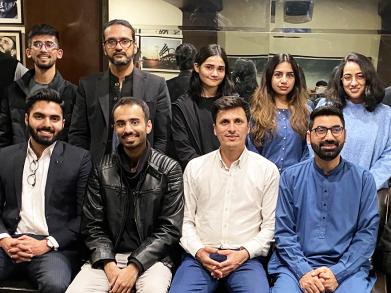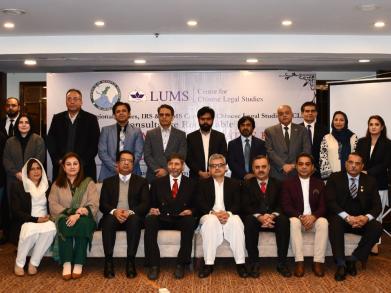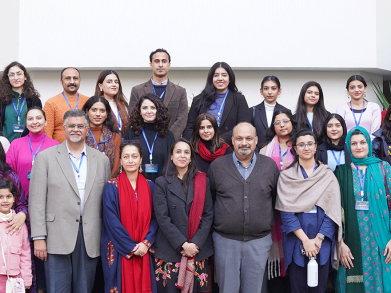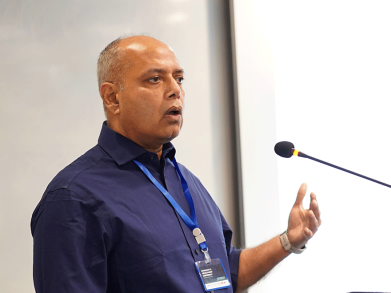Reducing delays in 5G Networks
LUMS researchers at the Syed Babar Ali School of Science and Engineering (SBASSE) have designed a new cellular packet core for 5G/6G networks that could help emerging low latency applications like augmented reality/virtual reality, remote surgery, cognitive assistance apps, and multi-player online gaming, run smoothly on cellular networks. This work was recently presented at ACM SIGCOMM, the premier conference on data communications and networks.
Mukhtiar Ahmad, a second-year PhD student at SBASSE and the lead student on the project, presented their work, ‘A Low Latency and Consistent Cellular Control Plane’ at the SIGCOMM 2020 conference, which was attended by over 1,000 people from across the globe. This work was supervised by Project Lead and Assistant Professor Dr. Zafar Ayyub Qazi, and Associate Professor Dr. Zartash Afzal Uzmi, along with MS students Wasiq Ahmad, Azam Ikram, Ali Nawazish, and an undergraduate student Syed Usman Jafri.
Existing cellular networks (4G and current 5G deployments) are known to suffer from long delays that lead to user dissatisfaction. There are several reasons for these delays, including, (i) the need to route user traffic via remote data centres that host cellular services, (ii) user mobility (e.g., when a user in a car moves from one location to another, the network needs to update the user connection state), and (iii) failures, which lead to lengthy disruptions in user’s access to cellular services. This work proposes a radically new network design that leverages Edge Computing, where the cellular core functions are distributed on edge nodes, e.g., cell towers and central offices.
By bringing these functions closer to the end-users, several sources of latency can be minimised. Their design, Neutrino, addresses several challenges to enable such a fast edge-based cellular network. Neutrino can reduce delays by more than 50% while gracefully handling failures of cellular functions.
Dr. Qazi discussed the significance of the paper being selected, “ACM SIGCOMM is the top conference on computer networks and is highly selective. Researchers from leading universities (e.g., UC Berkeley, MIT, CMU, and Stanford) as well as companies such as Google, Facebook, and Microsoft regularly submit papers to SIGCOMM. For LUMS to have a paper accepted in SIGCOMM, with only LUMS authors, is an outstanding achievement.”
With 5G deployments starting to get rolled, the cellular core design has remained a pain point. As a result, most deployments have remained similar to 4G packet core deployments. This work proposes a promising design of the cellular core that informs this discussion by addressing several important challenges.
Dr. Uzmi explained the need for high-fidelity prototypes for making progress in this space as many issues only manifest in real traffic scenarios. The team built a real prototype of Neutrino and demonstrated its promise at scale against existing designs using real cellular traffic traces. The team hopes that Neutrino will generate a discussion in the standardisation community on the design of 5G/6G networks.
Research and student mentoring at SBASSE
For Mukhtiar Ahmad, his time as a PhD student at LUMS has been both challenging and rewarding. It allowed him to delve into cutting-edge research and learn from among the best in the field. “I joined LUMS in September 2018 as a PhD student and since then have been part of a dynamic research environment where my professors always supported me and trained me to do quality research.”
He also spoke about how the research culture at LUMS is drastically different, “My experience of research during my MPhil before I joined LUMS was drastically different. At LUMS, the professors and advisors are involved at every stage. Despite the late nights and the deadlines at odd hours, they were always there to support me. LUMS has a great future in the field of research primarily because of the level of involvement of the faculty and their support for students.”
The future of Pakistan’s telecom industry
Before he joined LUMS, Dr. Qazi worked as a Postdoctoral scholar at UC Berkeley in their computer science and electrical engineering department where his research took him into the world of future telecom networks. He shared how the telecom industry in the USA is rapidly evolving their networks to make them highly flexible and programmable.
“There has been a revolution going on in the networking industry where ideas such as software-defined networking and network function virtualisation have taken the industry by storm. Most big telecom providers in the US are rapidly moving to software solutions that are decoupled from the hardware and allow them to flexibly evolve their network,” he explained.
This change, however, is most potent in the west where large carriers like AT&T have already migrated more than 60% of their network functions to software-based solutions. In Pakistan, however, the transformation is lagging.
“Overall, in Pakistan, the telecom network evolution has been slower and it seems there is still a huge reliance on hardware-based solutions. But the industry is slowly catching up.”
Dr. Qazi admitted that this turnaround will take time in Pakistan but there are promising first steps being taken.
“Through such projects, we plan to train students to work on cutting-edge technology with the long-term goal of emulating the model in the US where the industry labs collaborate with top universities to work on next-generation solutions. We hope to contribute to creating such an ecosystem in Pakistan, where universities have strong linkages with the industry with the goal of helping them innovate.”






